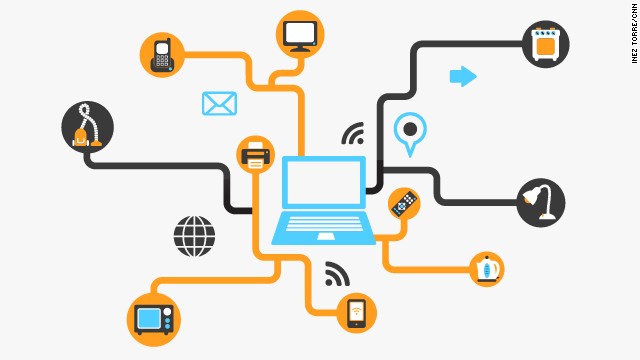This blog is used for example purposes for my students seeking guidance on how to setup content.
Wednesday, March 26, 2014
City Council Report - Climate Change Impact in San Diego [BP 9]
[introduction] This report was created for the City Council of San Diego by Amanda Netburn, student at Kearny High School, to provide information on potential consequences and the economic impacts of climate change on the City of San Diego.
[summary] San Diego may expect the following:
[impact #2] Glaciers and icebergs are melting, causing the oceans to fill with more water. San Diego can expect to experience the same, and the impact on animals and humans will be [what?]
[impact #3] Carbon dioxide dissolving in the oceans will cause it to become more acidic, which will affect animals and human [because?]
[impact #4] Ocean begins to lose it oxygen. Warmer water does not hold as much gas as cold water
[because?]
[conclusion] Because of these impacts and consequences, the City Council can begin planning for a future San Diego.
[summary] San Diego may expect the following:
- Warming
- Sea level rise
- Ocean acidification
- Ocean deoxygenation
[impact #2] Glaciers and icebergs are melting, causing the oceans to fill with more water. San Diego can expect to experience the same, and the impact on animals and humans will be [what?]
[impact #3] Carbon dioxide dissolving in the oceans will cause it to become more acidic, which will affect animals and human [because?]
[impact #4] Ocean begins to lose it oxygen. Warmer water does not hold as much gas as cold water
[because?]
[conclusion] Because of these impacts and consequences, the City Council can begin planning for a future San Diego.
Monday, March 24, 2014
Threats to Capitalism
 |
| http://www.cnn.com/2013/05/02/travel/london-city-airport-internet-of-things/ |
2.) The lowering of marginal costs to "near zero" is what Rifkin thinks will be a threat to capitalism's future. He said this lowering is "a paradox at the heart of capitalism," because the products that are made have costs and prices that are close to free, and that makes the product "no longer subject to market forces," according to Rifkin.
3.) The first example Rifkin offered for a threat to capitalism is Napster, a peer-to-peer application that allowed users to download music for free. He said this application totally changed the music business, and now artists can rarely make money on the recordings they make.
Another example Rifkin used to prove there is a threat to capitalism is how green energy, like solar panels, are making the cost of electricity cheap or free.
4.) Adding information into the mix causes more threats to capitalism, according to Rifkin. In his piece, Rifkin described this concept called "The Internet of Things" in which all kinds of different devices are connected to the Internet, uploading a bunch of data onto the Internet, which allows consumers to make even more educated purchasing decisions, thus more lowering of marginal costs, increasing the threat to capitalism as we know it.
5.) I agree with Rifkin's analysis; however, I also don't agree. I agree that the lowering of marginal costs are a threat to capitalism because it's difficult to make a profit when stuff is free. But I also think that when dealing with capitalist, people wanting to make a profit, they will always find a way to do so, and as a result capitalism won't ever die in the way Rifkin described.
Thursday, March 20, 2014
Our Warming Planet: We need to do something now [BP 8]
2.) The reasons why the ice in the North Pole is disappearing is because the planet and its oceans are warming. This warming is caused mainly by humans. CO2 output, with the main source coming from human activities, is leading to more greenhouse effect, which is like a blanket around the planet, causing Earth to retain more of its heat, making the planet warmer.
3.) Teenagers can do a lot to help decrease the speed of global warming. One thing to do is to use less electricity. One easy example is to replace typical light bulbs with compact florescent or the even more efficient LED light bulbs. Even better is to drive in a car less, and use a bicycle, skateboard, or use more clean energy forms of transportation like the bus or trolley.
 |
| The new LED light bulbs lasts a long time, but they are expensive |
Some global warming deniers would want us to believe that humans are not causing the planet to warm, but 97% of climate scientists agree: humans are the main cause of the current warming trend. With the increase in CO2 gases, caused mainly by power plants and cars, greenhouse gases are accumulating in the atmosphere, causing more of the earth to heat up due the greenhouse effect. Go here to learn more: http://goo.gl/BpojCd
Subscribe to:
Posts (Atom)


